Don’t Just Buy Granite Canner, Do This Instead
Views: 225
So, you’re thinking about buying a granite canner. It’s tempting, right? Those speckled beauties sit on store shelves, promising perfectly preserved jars of the nature’s bounty. But hold on! Before you grab that granite water bath canner, let’s take a moment to explore whether it’s really the tool for the job. Spoiler alert: there might be a better approach that could save you money and give you more flexibility in your canning adventures.
The Granite Canner Appeal
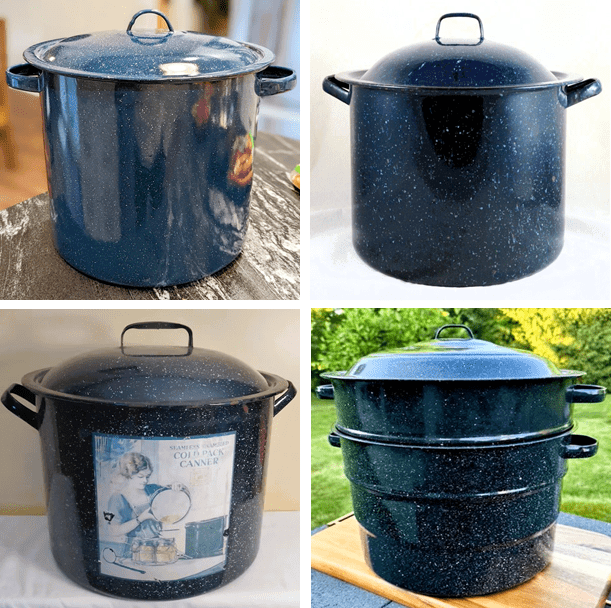
Granite water bath canners have been around for quite some time now. They’re lightweight, frequently inexpensive, and big enough to hold a dozen pint jars at once. The enamel coating on these canners makes them durable, so you don’t have to buy a new canner every second year. Plus, they look classic — like something your grandma would have proudly used to stock her pantry. So, what’s not to love?
But here’s the thing: while granite water bath canners are great for water bath canning, not all of them are created equal. Furthermore, if you are just starting on the canning journey, don’t feel like you must buy one of these to be successful. Know, they aren’t the only option. In fact, you might already have the perfect setup in your kitchen!
What is a Granite Canner?
Before we explore the alternatives, let’s first clarify what a granite canner is. Essentially, a granite canner is a type of a water bath canning pot that features a distinctive speckled enamel coating, which gives it the appearance of granite stone. The manufacturers of these canners specifically design these pots for preserving fruits, vegetables, and other foods by submerging jars in boiling water to create a vacuum seal.
Granite Canner Anatomy
Credits: Amazon GraniteWare Shop

How Do They Make Granite Canners?
Canner Base: Typically, they make granite canners from metal, often steel, which provides durability and heat conductivity. The metal base is essential for even heat distribution during the canning process. However, the cheaper canner versions are often made of low-quality, light steel or aluminum.
Enamel Coating: Next, comes a layer of enamel that gets applied to the canner base. The enamel, which is made from glass, is often mixed with color pigments to achieve the signature speckled look. Once the enamel is applied, the canner is then placed in a kiln and heated to a high temperature. This process fuses the enamel to the metal, creating a hard, durable surface that resists scratching and staining. An even coating is essential for a quality granite water bath canner. Conversely, uneven coating results in a poor heat distribution, which can negatively impact the canning process.
Before You Buy Water Bath Canner, Look in Your Cupboard
If you’re new to canning and only plan to make one or two small batches of jam, instead of rushing out to buy a granite canner, consider this: do you really need a dedicated canning pot? The answer might surprise you. If you own a tall pot with a lid, you’re already halfway there. All you need is a canning rack to elevate your jars off the bottom of the pot, and boom — instant water bath canner, all for the price of $15 or less. Here’s why this method works just as well (if not better!):
Stockpots are versatile: Unlike a granite canner, which you can use for, well, canning, you can use stockpot for making soups, broths, pasta, and more.
Saves space: Why clutter your kitchen with a massive canner that you only use a couple of times a year? A stockpot or Dutch oven is something you’ll use often, making it a more efficient use of space.

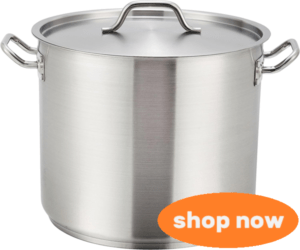
The DIY Canner Setup
Here’s how you can turn your regular pot into a water bath canning powerhouse:
- Find a Pot: Make sure your stockpot is deep enough so that the water can cover your jars by at least 1-2 inches.
- Buy a Rack: This ensures the jars don’t sit directly on the bottom, which helps with even heat distribution and prevents breakage. You can buy a reasonably priced rack on Amazon

- Fill with Water and Jars: Load it up just like you would with any canner — add your jars, fill the pot with enough water to cover them, and you’re good to go.
When You Should Actually Buy a Granite Canner
Alright, I hear you. Maybe you’ve got an enormous garden, and the thought of processing tiny batches in a stockpot is just laughable. Fair enough! If you’re doing large-batch canning or want to preserve tons of produce in one go, then a dedicated granite canner might be worth the investment.
But even then, consider this: stainless steel water bath canners are a fantastic alternative. They’re more durable, less prone to chipping, and often come with built-in racks. While they may be pricier, they can last you a lifetime, unlike enamel-coated granite canners, which are more prone to wear and tear over time.

If You Do Buy a Granite Water Bath Canner, Choose Quality
If you’ve decided to buy a granite water bath canner, don’t just grab the first one you see. Quality really matters! Not all canners are the same, and this includes granite canners. The word “granite” can be misleading because just having that signature speckled look doesn’t guarantee durability. While most granite canners are made with enamel coating over steel, the quality of that enamel can vary greatly. Cheaper options are more likely to chip or crack, especially when exposed to high heat or sudden temperature changes. Once the enamel chips, the metal underneath can rust or wear down, reducing the canner’s lifespan.
Additionally, lower-quality granite canners tend to have thinner metal bases. This can lead to uneven heat distribution or even warping after only a few uses. Over time, these canners start to show wear and tear, making them unreliable for long-term use.
Honest Review: Non-Branded Granite Canner with Wire Rack
Whether you go to a big-box store or shop online, most likely you will find one of these these non-branded, inexpensive granite canners. Almost exclusive made in China, they often have similar characteristics, which is why this review will give you a good idea of what to expect.
According to the manufacture of our canner, the pot was made with carbon steel and glass enamel coating. However, it felt as flimsy as any cheap aluminum pot would.
If you’re new to canning, pay close attention to the canning rack that comes with these generic granite canners. The rack in our granite canner had a design flaw that allowed the jars to slip through the wires and touch the bottom of the pot, which defeats the purpose of the rack entirely. Additionally, the wires used to make the rack overlapped. As a result, there wasn’t a flat surface for the jars to rest on, making the jars less stable during the canning process.
Always make sure the canner is deep enough to allow for at least 1 inch of water over the jars’ tops. It’s important to remember that you must process jars at a rolling boil. If your canner barely allows for 1 inch of water, you’ll likely have water spilling over once it starts boiling. This granite canner was too shallow for its purpose.
Lastly, you should not use most of these non-branded canners on glass cooktop ranges. If you have a glass cooktop, we want to warn you that the enamel could fuse to the surface and cause damage. The instructions inside our granite canner even included a warning about that! In the end, we returned the canner.
Frequently found issues with generic granite canners
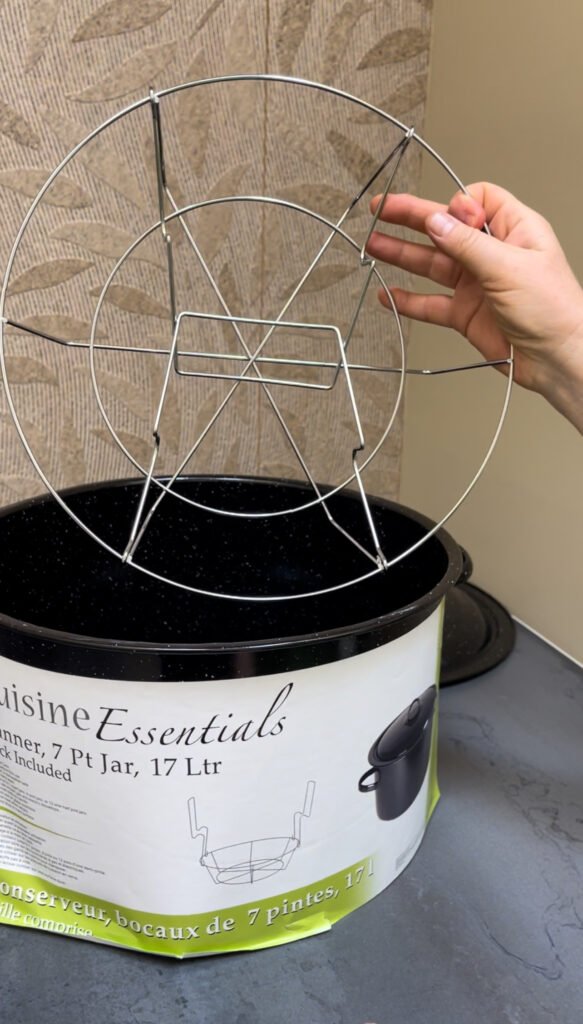


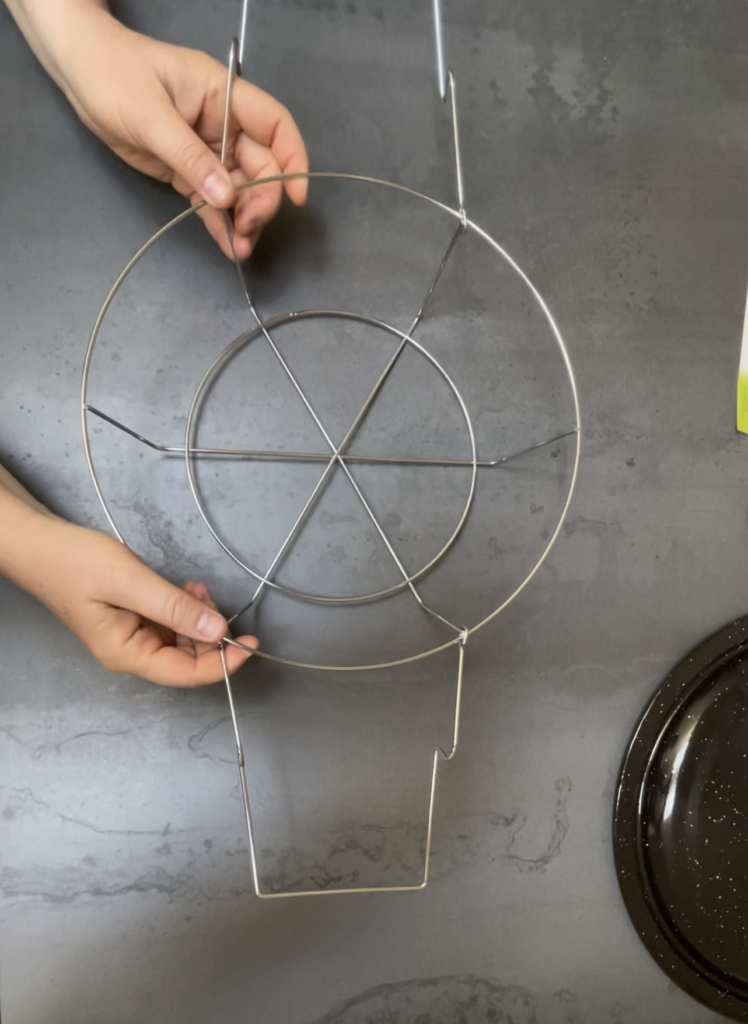


Go for Quality Granite Ware
If you want a granite water bath canner that stands the test of time, opt for a reputable brand like GraniteWare. Known for its quality and durability, GraniteWare uses thicker metal and higher-quality enamel coatings. This reduces the risk of chipping and ensures a more even heat distribution.
For most part, they make GraniteWare canners in the USA, occasionally in Mexico. The brand itself has a long history of producing reliable canning equipment. GraniteWare manufacturer builds these canners in a way that they can withstand years of use. They are far less likely to suffer from the common pitfalls of cheap imitations.
Final Thoughts: Be Smart with Your Canning Tools
Canning is a satisfying and practical way to preserve your hard-earned harvest, but you don’t need fancy, specialized tools to get started. Instead of immediately purchasing a granite water bath canner, check your kitchen for what you already have. A large stockpot can get the job done just as well, and you’ll save space and money in the process.
But if you do go for a granite water bath canner, make sure it’s one that’ll stick around for the long haul. Invest in a high-quality brands, and you’ll be set for many seasons of preserving — with fewer chips and more perfectly sealed jars!
Learn more about other canners available on the market
To help you learn more about canning methods and specialized canners we recommend these blog posts:
-
A Better Canning Method Than Water Bath Canning? We Think So!
Looking for a better way to preserve your summer bounty without breaking a sweat or lugging a bathtub-sized water bath canner? We’ll tell you how. It’s more than just temperatures and jar lifter dramas—think saving water (even babies get baths with less!) and saying goodbye to floating jams. Ready to upgrade your canning game?
-
VKP Fruitsaver Steam Canner Review: Helping You To Buy Better
We put the VKP Fruitsaver Steam Canner to the ultimate test in our canning kitchen, and now we’re spilling the beans! Is it a kitchen champion or a canning flop? Is it worth your money? Find all the answers in our unbiased review before parting with your cash!
-
A Beginners Guide To Steam Canning: All You Need To Know About Steam Canning At Home
Steam canning, also known as atmospheric steam canning, is a simple and efficient method for preserving your jam, jellies, pickles and more. Find out how it works and why it’s a great option for home canners. Learn about the types of steam canners available and how to do steam canning with and without specialized pots.
-
How To Assemble And Use Victorio Steam Canner
Want to try steam canning? Thinking about getting the Kitchen Crop steam canner, formerly the Victorio steam canner? Don’t buy just yet—read this first and make sure you’re fully prepared before making your purchase!



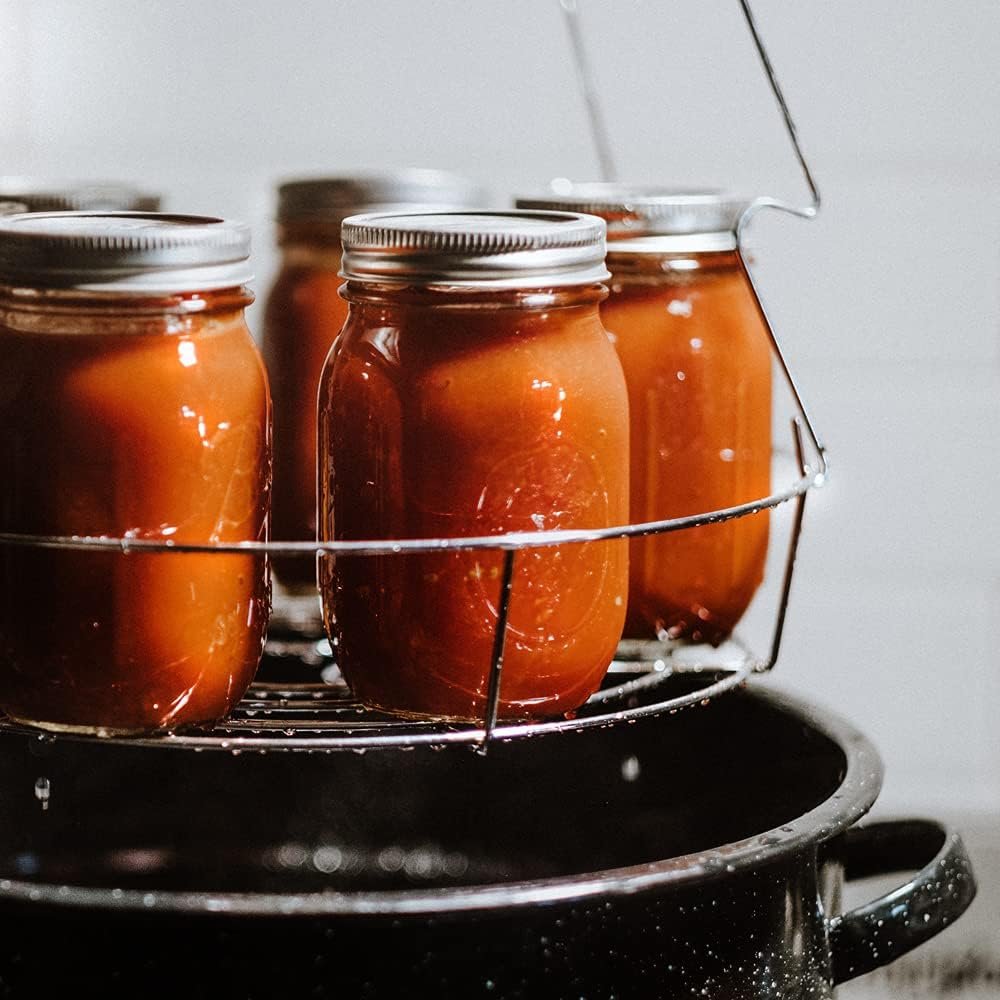


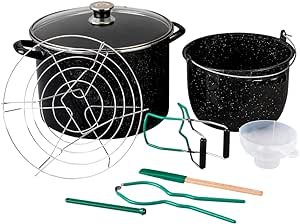









Leave a Reply